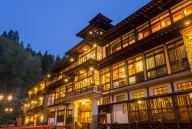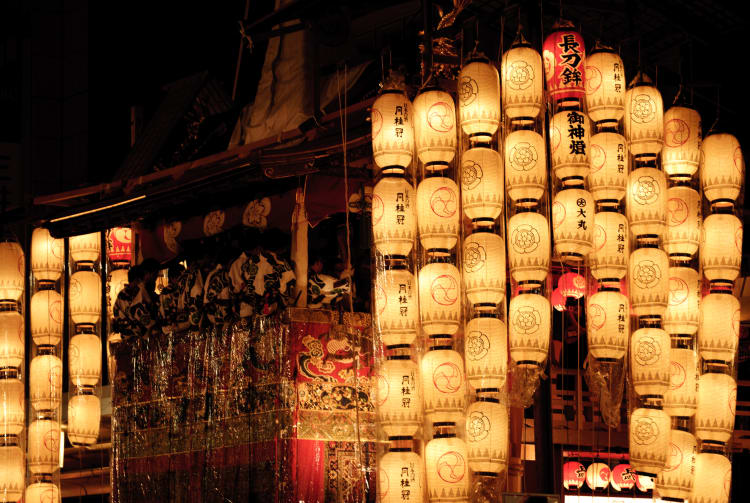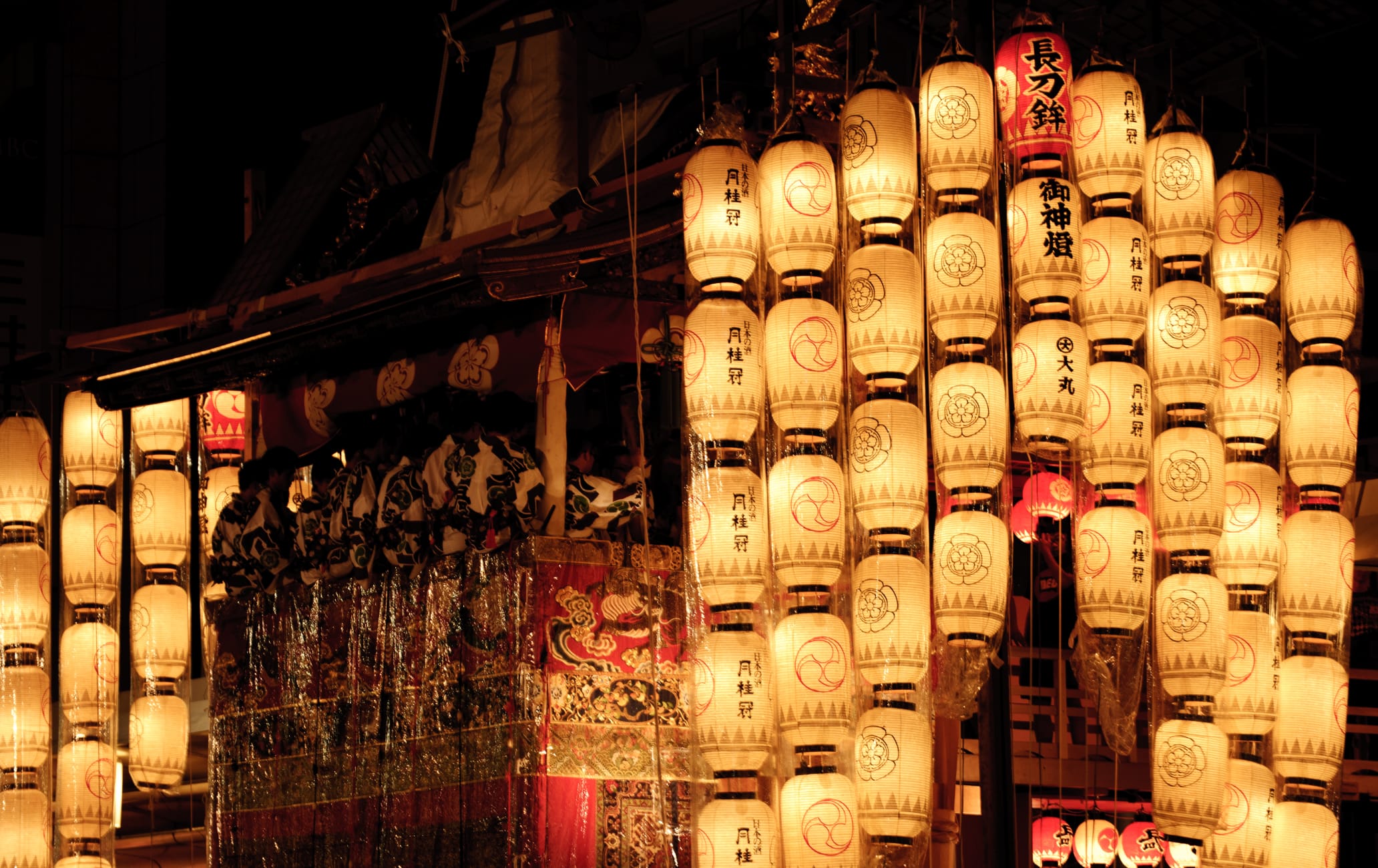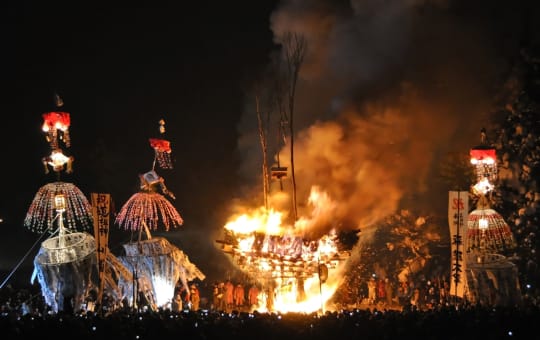Feiern Sie das heißeste Sommerfest von Kyoto – das legendäre Gion Matsuri
Das Gion Matsuri wird seit 869 abgehalten und ist das größte Fest des Landes. Die Stadt verwandelt sich in eine riesige Partymeile, insbesondere während der beiden Umzüge Mitte Juli, bei denen tonnenschwere, aufwändig verzierte Festwagen zur Schau gestellt und durch die Straßen gezogen werden.
Wenn Sie dieses äußerst beliebte Fest miterleben wollen, sollten Sie Ihre Unterkunft schon Monate im Voraus buchen.
Nicht verpassen
- Die abendlichen Yoiyama-Straßenfeste an den drei Tagen vor den Umzügen
- Die beim Byobu Matsuri ausgestellten Familienerbstücke
- Zusehen, wie die riesigen Festwagen haarsträubende Kurven nehmen
- Mit einem Yukata bekleidet zusammen mit den Einheimischen die Stimmung genießen und einen Imbiss auf der Straße einnehmen
Anfahrt
Das Gion Matsuri findet in der Innenstadt von Kyoto statt und ist mit U-Bahn, Bus, Taxis und zu Fuß gut erreichbar.
Die Hauptfeierlichkeiten werden in den Straßen Shijo, Kawaramachi und Oike abgehalten. Es ist relativ leicht, einen Platz zu finden, um dem Umzug zuzusehen. Beachten Sie dabei aber mögliche Straßensperrungen.
Kurzinfo
Gion Matsuri wird den ganzen Juli über abgehalten.
Die beiden größten Umzüge finden am 17. Juli (Saki Matsuri Junko) und am 24. Juli (Ato Matsuri Junko) statt.
Die größten Festwagen werden als Yamaboko bezeichnet und wiegen bis zu zwölf Tonnen.
Die Ursprünge des Festes
Das Gion Matsuri wurde während einer Epidemie im Jahr 869 eingeführt, um die Götter zu besänftigen. Traditionell wird jedes Jahr ein Junge aus dem Ort als heiliger Bote für die Götter ausgewählt. Vom 13. Juli bis zum Ende der ersten Parade am 17. Juli sitzt er auf einem der vielen kunstvollen Festwagen, wobei seine Füße niemals den Boden berühren dürfen.
Die prächtigen Gion-Festwagen
Beim Gion-Fest gibt es zwei Arten von Festwagen: Yama und Hoko. Ein Hoko kann bis zu 25 m hoch sein und bis zu zwölf Tonnen wiegen. Sowohl Yama als auch Hoko sind aufwändig dekoriert und mit hervorragenden kunsthandwerklichen Arbeiten wie gewebten Stoffen, gefärbten Textilien und Skulpturen verziert. Aufgrund ihrer Schönheit werden sie manchmal sogar als „rollende Kunstmuseen“ bezeichnet. Während des Festes gibt es zwei Umzüge, bei denen die Wagen von 9 Uhr bis 14.00 Uhr durch die Innenstadt von Kyoto gezogen werden. Der größere der beiden mit 23 Wagen findet am 17. Juli statt. Beim zweiten Umzug am 24. Juli sind nur noch etwa halb so viele Wagen dabei.
Abendfeste
Jedem Umzug gehen drei Abende mit Feierlichkeiten voraus, die als Yoiyama bezeichnet werden (jeweils am 14., 15. und 16. bzw. 21., 22. und 23. Juli). An diesen drei Abenden können die in verschiedenen Stadtgebieten geparkten Festwagen besichtigt werden. Rund um die Wagen können Sie Glücksbringer, sogenannte Chimaki, erwerben, und einen Imbiss an den Straßenständen einnehmen. Gesellen Sie sich zu den Einheimischen in ihren farbenprächtigen Yukata-Baumwollkleidern und genießen Sie die Stimmung dieses traditionellen Festes von Kyoto.
Sehen Sie die persönlichen Schätze der Einwohner von Kyoto
Das Wandschirmfest oder Byobu Matsuri findet während der Yoiyama-Tage des Festes statt. Wohlhabende Familien aus den Bezirken Shinmachi und Muromachi führen hier ihre persönlichen Schätze wie Wandschirme und Kimonos vor. Sie stellen sie vor ihren Häusern aus oder laden sogar Passanten ein, ihr Heim zu besichtigen. Auch die örtlichen Händler stellen stolz ihre Kunstsammlungen vor.













































